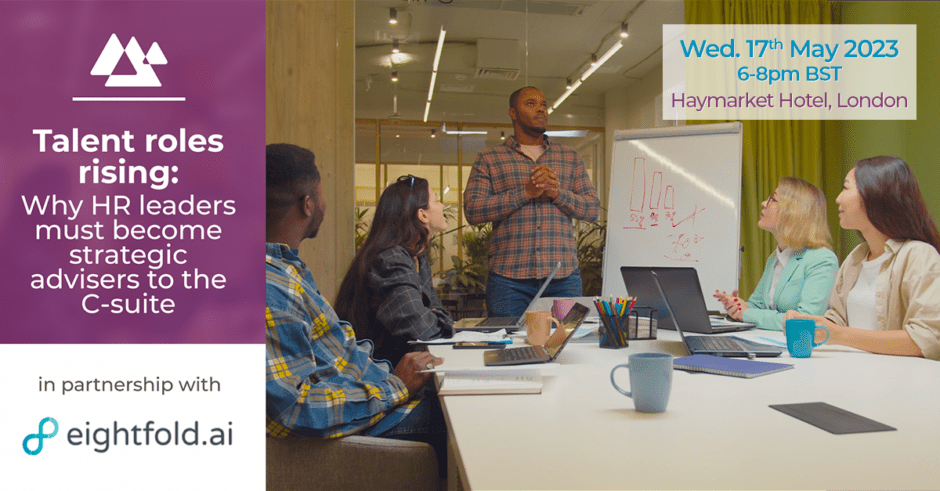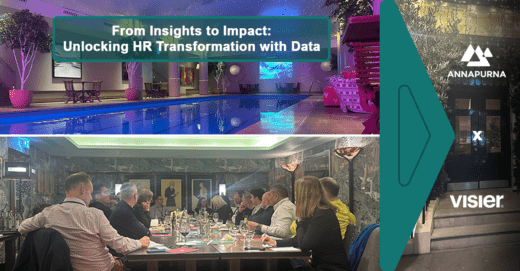More than most, HR professionals understand the importance of adapting to the constantly evolving business environment. The role of HR is no longer limited to recruiting, training, and managing employee benefits. Increasingly, HR leaders are expected to contribute to strategic decision-making by providing valuable insights based on data-driven analysis.
Annapurna recently partnered with Eightfold to look at the evolving role of the HR leader and the need to become strategic advisers to the C-Suite. The session brought together some of the leading People & Talent execs for a VIP roundtable, hosted by Magnus Okuonghae (HR Specialist Search Manager at Annapurna), with Natasha Brennan (Enterprise Account Exec at Eightfold) and Ricky Cheung (Customer Success Director at Eightfold) bringing expertise and knowledge to the table.
The conversation touched on many topics with 3 key takeaways being:
Stop being scared of data.
As an HR function, we must be driving towards data-driven decision-making. The group hypothesised whether HR was worried about using data because it doesn’t mean ‘people’. The world of HR is not just about our employees, it must have a blended approach with IT and Finance to ensure the business direction is cohesive. IT and Finance have historically had seats at the board table and the move from CFO or CTO to CEO is a common one but HR is still fighting the battle. HR must start to put numbers on things and enter conversations less as ‘HR’ and more as commercial solvers. Having a vision that is based on numbers will translate across the business more clearly than any words.
How are we telling our C-Suite why and what we are doing? Are we making sure that this is data-led? How do we then relay the same message to our teams? Senior execs look at data how they want to, sometimes as a result of data paralysis, so we must ensure that the data we use doesn’t just create its own noise but brings about genuine visible commercial insights.
What is the problem we are trying to solve as HR? The group agreed that they should be aspiring to be a digitally enabled support team for their organisations who understand the actual business aims and then go on to influence it in the most effective way.
The Tech that is Available Vs. The Capabilities of HR are Insufficient
We are in a time when the world of technology in HR is evolving at such a rate that new products and solutions are being released to the market on a daily basis.
All organisations are digital in some form but to truly reap the benefits, we must ensure there aren’t broken processes at the foundations. Technology has obviously accelerated really quickly but are the capabilities that we have within our teams accelerating at the same rate? Everything is moving quicker and faster, and the world is more complex than it has ever been. We need to get people excited to be in their roles and that can go hand in hand with showing people that they are on the journey of learning and individual growth. HR is synonymous with talking about just HR factors, there must be ownership of additional elements to help showcase the actual value of HR in the future.
The HR role has evolved, at the very least as a job title evolution from Head of HR to Head of People. Would the function be more successful if it had a broader hat and was more progressive with angles such as sustainability and ESG?
We are all fighting for the same talent
Our people are our most important asset, yet one of the key talking points around the table was the ongoing feedback that colleague experience is poor. A poor employee experience, results in someone looking to move on, unless there are internal mobility programs in place to facilitate the change. This impending loss of talent will inevitably have an impact on client-driven projects, affecting bottom-line future earnings.
We must hire good people and ultimately give them a good experience.
Client projects are analysed, scrutinised and insights are produced on a regular basis but as soon as we start looking internally, we use more simple analytics or none at all. How can we start creating insights which produce a more comprehensive picture of our organisation internally? Org and talent reviews are undertaken but there isn’t necessarily a system to give our employees insights to see how well they are doing.
The conversation finished on the role of internal mobility and how we tackle attraction, retention and attrition. Attrition is not necessarily always a bad thing for organisations as it can bring fresh ideas, performance and drive to your teams.
We should however be trying to keep our talent within the business, even as knowledge workers, and therefore there is a huge opportunity for internal talent marketplaces. The user experience of job roles being advertised internally should be a slick and easy process. Your talent marketplace should give your employees more visibility of everything when it comes to opportunities and personal growth. We must showcase the benefit of staying within the business to both our employees and also to their managers.
HR must evolve from where it currently is. The more HR stands still, the more it will get left behind. Implementing the right technology tools, utilising the best data and showcasing its value to the wider organisation will create an array of opportunities. The role of HR is to make tasks, roles and projects easier. We must ensure we are looking at the purpose of the business and helping give people the time to do great work.
About Eightfold
Eightfold AI is the industry’s first Talent Intelligence Platform that transforms how you hire, retain, and grow a diverse workforce.
The platform is built with three pillars in mind:
First, we believe that people are every enterprise’s greatest asset, and we want to put them at the center. We aggregate all people data within an enterprise – from applicants to alumni – which is currently siloed across many different point solutions. This becomes the richest & most comprehensive Talent Network for each enterprise.
Second, we use data to provide intelligence on what people are capable of doing instead of just what they have done in the past. This allows enterprises to more effectively match people to the right opportunities.
Third, using AI, the platform continuously learns from enterprise and individual performance to predict future roles, performance, and career alternatives.



